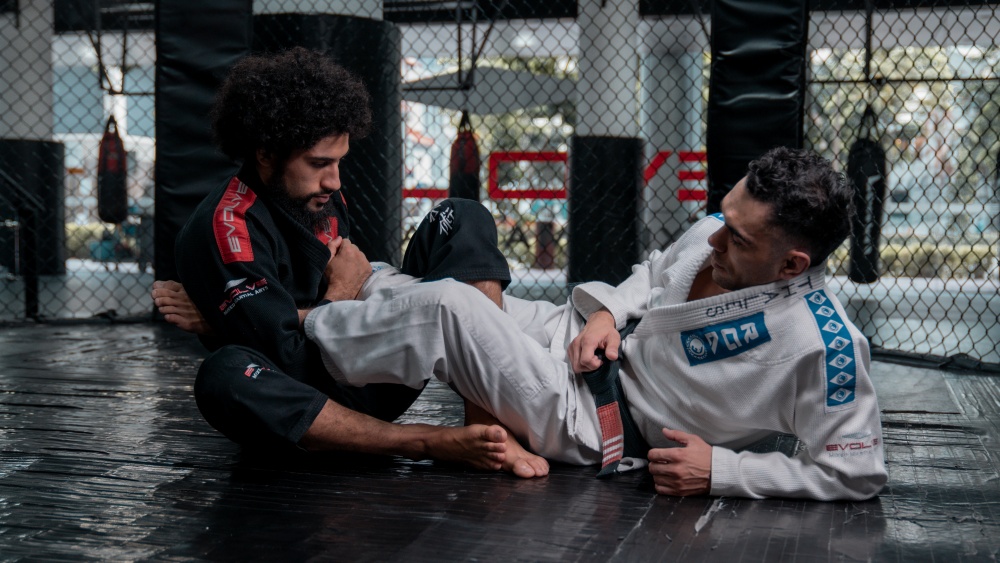Guest post by Evolve MMA, Asia’s premier championship brand for martial arts. It has the most number of World Champions on the planet. Named as the #1 ranked martial arts organization in Asia by CNN, Yahoo! Sports, FOX Sports, Evolve MMA is the top rated BJJ gym in Singapore.
The modern approach to Brazilian Jiu-Jitsu involves using a vast array of techniques targeting every possible part of the human body. Over the years, the explosion of leglocks was instrumental in elevating the sport to new and greater heights. What was once a frowned-upon technique turned into an avenue for innovation. One such technique that has been making waves in the grappling community is the Z Lock. While not yet as popular as its contemporaries, this submission has captured the imagination of grapplers worldwide and is now seen in many high-profile tournaments. Today, we’ll examine what makes the Z lock an effective attack.
The Mechanics Of The Z Lock
The Z Lock is a twisting leg attack that targets the opponent’s knee. At its core, the technique involves trapping the opponent’s leg in a configuration that puts immense pressure on the knee joint, particularly the ligaments. The name “Z Lock” is derived from the unique positioning of the legs, which, when viewed from certain angles, resembles the letter ‘Z’.
To perform the Z Lock, you must first control the opponent’s leg using a form of leg entanglement, ensuring that the knee is bent. Your legs are then used to sandwich the opponent’s leg, with one leg under the calf and the other over the thigh. By applying pressure and forcing the leg to bend sideways, the attacker can inflict a painful submission on the opponent’s knee, forcing a tap. We’ll go over the exact details in a bit.
Benefits Of Using The Z Lock
What makes the Z Lock particularly effective is its element of surprise. Compared to more common leg attacks you typically see, many practitioners are unfamiliar with the mechanics and dangers of the Z Lock. This unfamiliarity can be an edge in most cases, as the opponent may only recognize the threat once it’s too late.
Moreover, the Z Lock doesn’t rely on Gi grips, making it equally effective in both Gi and No-Gi grappling. Its versatility ensures that it can be applied in various positions, making it an excellent option to catch unsuspecting opponents.
The Z Lock In Action
In this video, Gustavo Gasperin from the MMA Leech YouTube channel breaks down the basics of the Z Lock submission. He shows competition footage of Junny Ocasio, a famous Murilo Santana black belt, and one of the key figures in the technique’s exposure to the global stage.
The origins of the technique can be traced back to none other than leglock master and legendary black belt Eddie Cummings, who trained with Ocasio at Unity Jiu-Jitsu in New York City. The Z lock is a powerful and, in many ways, a unique technique where the primary target is torquing the leg outwards, attacking the opponent’s hip and knee. As of this writing, several top competitors have attempted the Z Lock in their matches, but it is still considered an exotic submission for the most part.
Going back to the competition footage, Junny gets double ankle control from the top position and places one leg in between the opponent’s entering the ashi garami position. He then moves to a reaping position, otherwise known as the “Leg Knot,” to establish more control over the opponent’s legs. From here, the goal is to put pressure on the legs by placing weight on the opponent’s hips. Fall to the side and pin the far leg as you push one leg up with a C Grip. Doing this should bend the leg at a compromising angle, thus forcing a tap.
Notice that the final configuration of the leg. It is safe to say that this submission can cause a lot of damage if left unattended. We emphasize that you practice extreme caution when training and using the Z Lock in the gym and in competition.
Defending Against The Z Lock
As with all submissions, awareness is the first line of defense against the Z Lock. Recognizing when an opponent attempts to set up the lock allows you to take preemptive action, either by straightening the leg or extracting it from the entanglement.
Also, maintaining good posture and ensuring one’s legs are not overly committed or extended can reduce the risk of falling victim to the Z Lock. Practicing leg pummeling drills and general awareness of leg positioning during sparring will surely keep you safe from this submission.
Is Learning Leglocks Really Necessary?
Nowadays, it is simply a must to know at least the very basics of the leg game to stay competitive. The days when you can remain competitive without learning how to attack and defend leglocks are over. Regardless of your rank and style of grappling, you will undoubtedly encounter many leglock specialists in your Jiu-Jitsu journey. This is especially true if you cross-train and compete in local tournaments.
Understand that you do not need to become an expert in leglocks. Learning the basics should be more than enough to get you started, especially if you are a white or blue belt. The key here is that you should become aware of the common threats that come with leg attacks. If you decide to dive into the more complex leglock positions, that is up to you at the end of the day.
Drilling the basic leg positions, such as the irimi ashi garami, should be part of your regular schedule if you want to learn leglocks quickly. Incorporate the Z Lock into your learning and study its primary entries, control points, and finishes.
Conclusion
The Z Lock is a powerful addition to the leg attack game in BJJ. While it may not yet have the widespread recognition of some other leg locks, its potential is undeniable. For those looking to expand their submission repertoire and add a new dimension to their ground game, the Z Lock offers a compelling option.
As always, when practicing new techniques, especially those targeting the joints, it’s essential to apply them with care and consideration for training partners. The journey of BJJ is one of continuous learning, and the Z Lock is just one of the many techniques waiting to be explored.

















